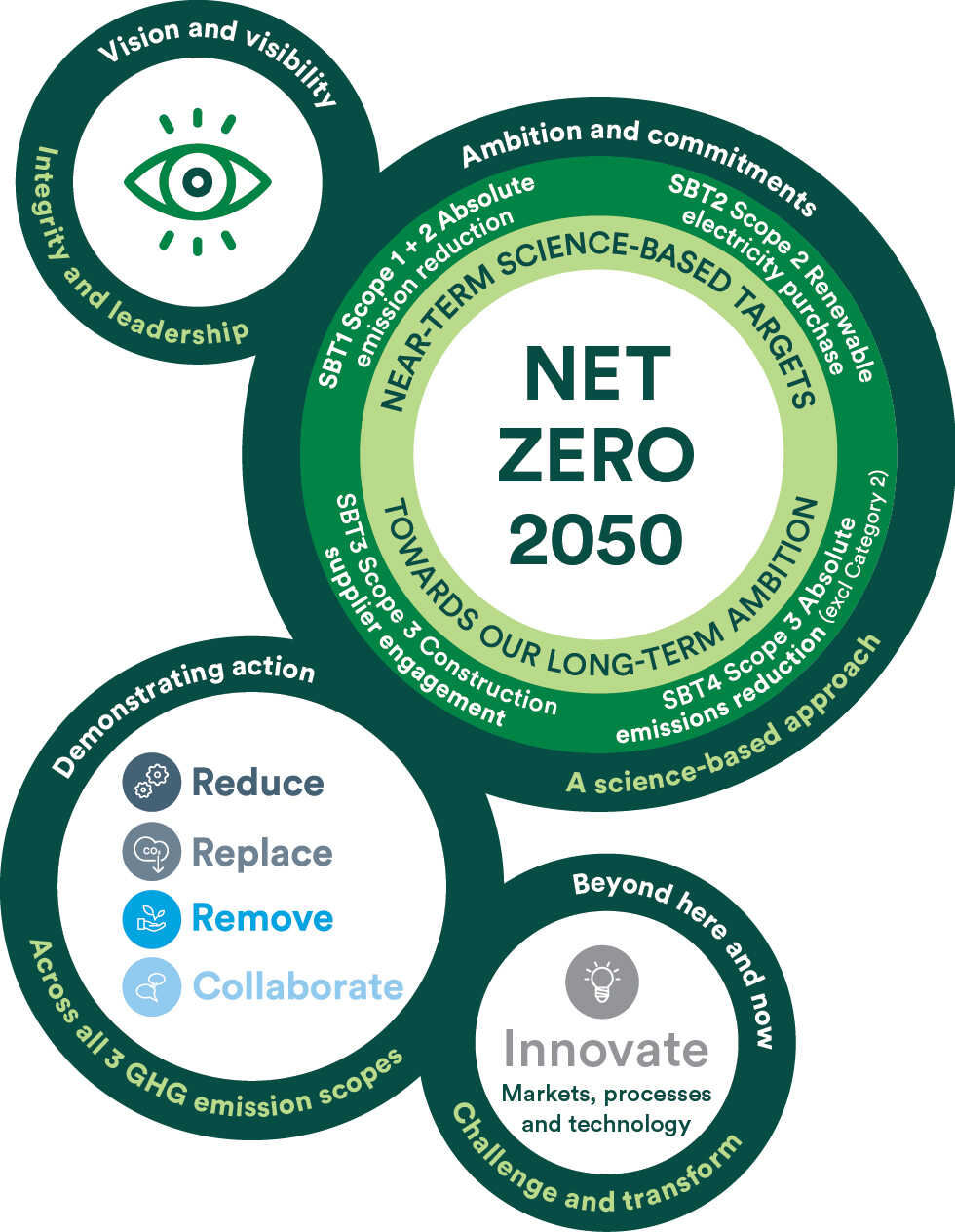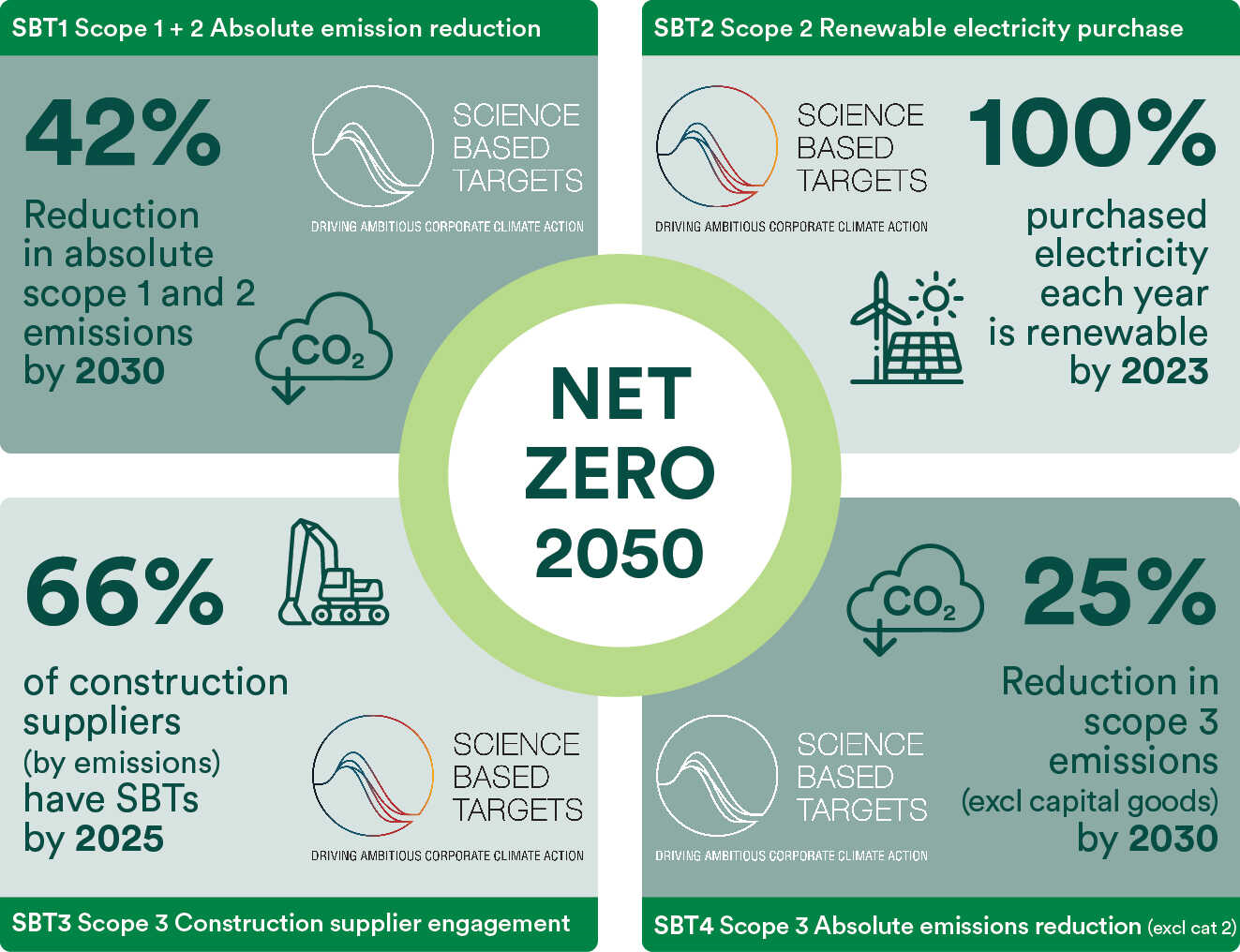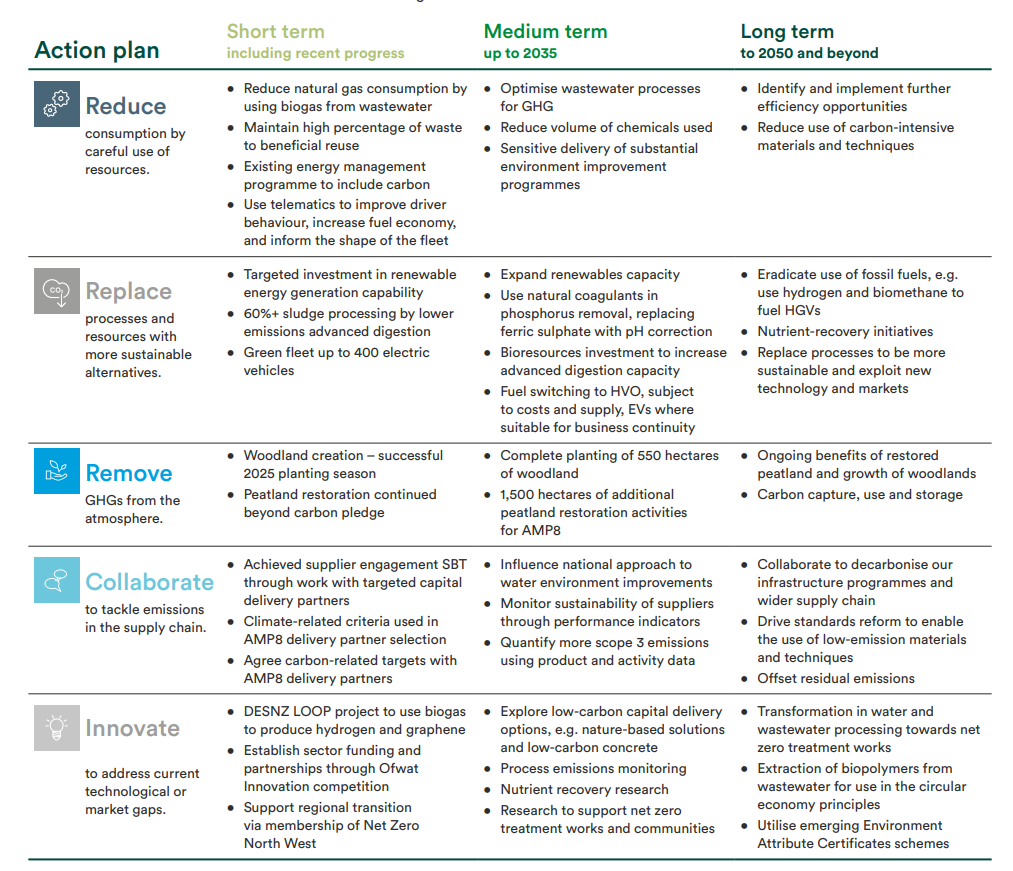Climate change mitigation
There is global scientific agreement that as a result of human activity the amount of greenhouse gases (GHGs) in the atmosphere is increasing and affecting the global climate. Therefore minimising the GHGs emitted as a result of our operations and taking action to remove emissions from the atmosphere will mitigate climate change and help United Utilities and the North West become healthier, greener and stronger.
To see how we performed this year, you can view our annual report here.
Our net zero transition plan
Great carbon management is more than just a number and our climate change mitigation strategy is more than just an emissions target. Our strategy and resultant transition plan contains four themes that are all vital to transition to a low carbon future:

Ambition and commitment
Playing our part to mitigate climate change and lower our greenhouse gas emissions to help make the North West a better place to live now and in the future
Our SBTi approved science based targets

An important element of our approach is to demonstrate our ambition and encourage others to contribute by making public commitments. In 2020 we made six carbon pledges, and we are making good progress to deliver these.
Central to our pledges was to set four near term science-based targets for all emission scopes. United Utilities is proud to be the first UK water company to have had near-term targets approved by the Science Based Targets initiative (SBTi), a collaboration that defines and promotes global best practice in science-based target setting. Our four targets cover all three emission scopes and the scope 1 and 2 emissions reduction target is consistent with the 1.5° ambition of the Paris Agreement. We plan to review, and if needed, revise our near-term science-based targets as per SBTi guidance and in line with our next business planning period.
The SBTi Corporate Net-Zero Standard was launched in late 2021 and reinforcing our support to the Business Ambition for 1.5°C campaign, we have submitted our long-term target and commitment to net zero for validation and they were approved August 2024.
Vision and visibility
Demonstrating integrity and leadership in carbon reporting and disclosure.
Vision and visibility are the foundations of our climate change mitigation strategy. We are dedicated to understanding how every aspect of our operations contributes to our emissions. Our aspiration is to ensure we consider the climate in all operational and strategic decision-making, influencing strategy and behaviours by including emissions management in remuneration schemes and including government carbon values into our best value framework used for decision-making.
We are committed to reporting in an open and transparent way, aiming to be recognised as among the best in the UK. We have a strong track record of sustainability reporting, having obtained independent, third-party verification of our GHG inventory by Achilles Group since 2008. Click here to read more about external recognition and benchmarking.
 Carbon reduce certificate (PDF 247KB opens in new tab)
Carbon reduce certificate (PDF 247KB opens in new tab)
Independent assurance statement (PDF 169KB opens in new tab)
We are dedicated to understanding how every aspect of our operations contributes to our emissions, and as part of our vision, we are working to ensure we consider the climate in all our operational and strategic decision making. We have responded to the CDP climate change questionnaire since 2010 and use this as our benchmark of leadership. Based on our 2024 response we are honoured to have made it onto the A list both for climate and supplier engagement. We also improved our rating on the water security assessment, going from a B to an A- in our second response.
Demonstrating action
Reducing our environmental impacts through delivery of transformational strategies and culture change
Transition action plan
We have an action plan to achieve the long-term ambition of net zero by 2050 (in line with climate science and the UK Government targets).
We are already working on, and delivering on, actions in all themes see below:
- Reduce through the efficient use of resources;
- Replace processes and resources with more sustainable alternatives;
- Remove GHGs from the atmosphere;
- Collaborate to tackle emissions in the supply chain; and
- Innovate to address current technological or market gaps.
Our priorities in the short to medium term are to reduce our absolute emissions through these actions before we use carbon units or purchase any credits to offset the residual emissions to net zero.

For current progress see here in our integrated annual report.
Pledge progress
We are also working towards meeting our carbon pledges.
We are trialling alternative fuels to replace fossil fuels used in our treatment processes and for transport and have projects underway to restore peatland and plant new woodlands which will have a net GHG emissions reduction. To address our scope 3 targets we are already working with suppliers such as Sapphire Utility Solutions to reduce emissions from their fleet as they carry out maintenance on our network and with Changemaker 3D on making made-to-measure objects out of sustainable concrete on site through 3D printing.
Pledge 1
42% reduction of scope 1 & 2 emissions from our
2020 baseline by 2030
Pledge 2 ✔
100% of electricity used from renewable sources
Pledge 3
100% green fleet by 2028
Pledge 4
1,000 hectares of peatland restoration by 2030
Pledge 5
Plant one million trees to create 550 hectares of woodland by 2030
Pledge 6 ✔
Set a scope 3 science-based target
Energy management
We have demonstrated our capability to reduce our greenhouse gas emissions having reduced them by over 70 per cent since 2005/6 largely from working to balance our energy consumption, self-generation and being smart about how we operate our assets to get best value while maintaining security of supply. In 2021/22 we generated a record 210 GWh of renewable energy from a mix of generation from wind, hydro, solar photovoltaics and energy recovery from bioresources (using sewage sludge to power combined heat and power generators) and we have strong plans to increase our self-generated energy over the coming years. Between self-generated power and purchased electricity, from October 2021 100 per cent of the electricity we source has been from renewable sources.
Click here to find out more about our approach to energy management.
Beyond here and now
Innovating across processes, technology and culture
Our strategy pillar of ‘beyond here and now’ encourages us to reflect on the challenge to influence emissions beyond our current inventory and existing capabilities. To deliver our net zero transition plan we will challenge standards and engage with industry peers, our supply chain, and other partners to develop markets, technologies and practices to reduce or mitigate future emissions.
We co-chair the Water UK carbon network and are part of a team who lead net zero research across the industry, for instance exploring and testing what operational interventions can be made to reduce process emissions. We have also facilitated a water industry task and finish project to understand and quantify the GHG emissions related to chemicals use.
An example of working with our supply chain is our Innovation Lab, which is an annual 14-week programme that provides successful applicants opportunities to test their solutions to our business challenges. The programme is designed to ‘look for ideas where others aren’t looking’ – in other sectors, other countries and with suppliers that are often small, start-up businesses, just starting on their idea development or business growth journey. Our most recent programme included teams developing technology to capture methane and testing sustainable concrete incorporating graphene. A further example of evolving our practice and delivering outcomes in partnership is our procurement for AMP8 programme partners. All the tenders have included assessment of suppliers' measurement, management and reduction of GHG emissions and have favoured those with a robust and science-based approach.